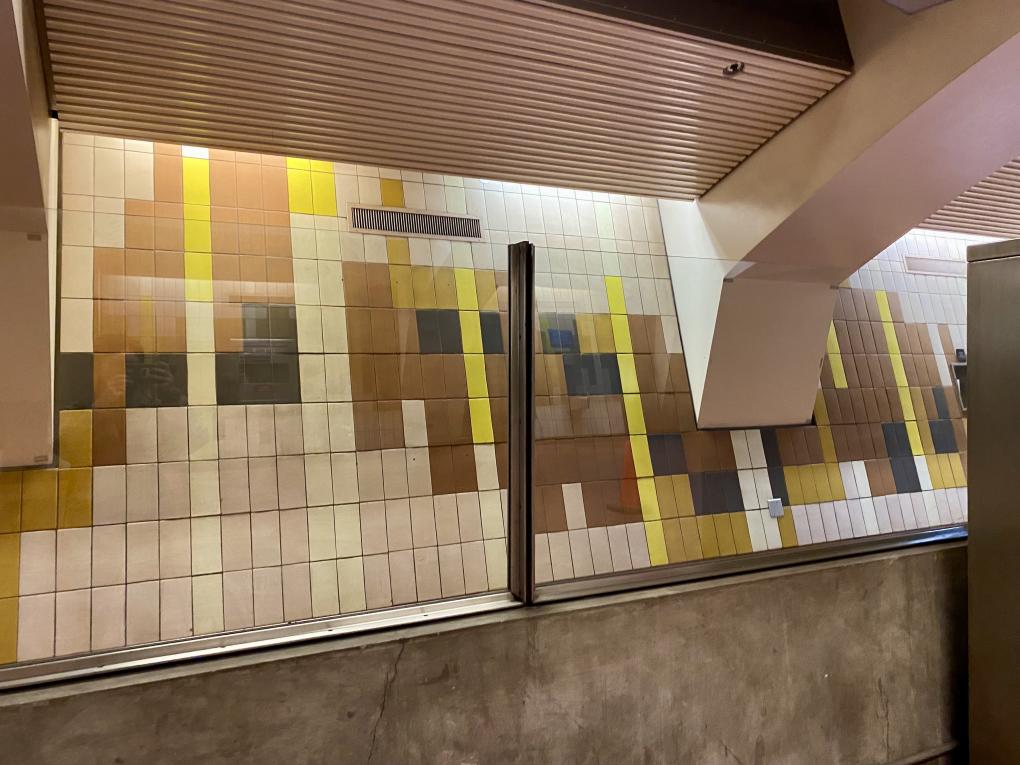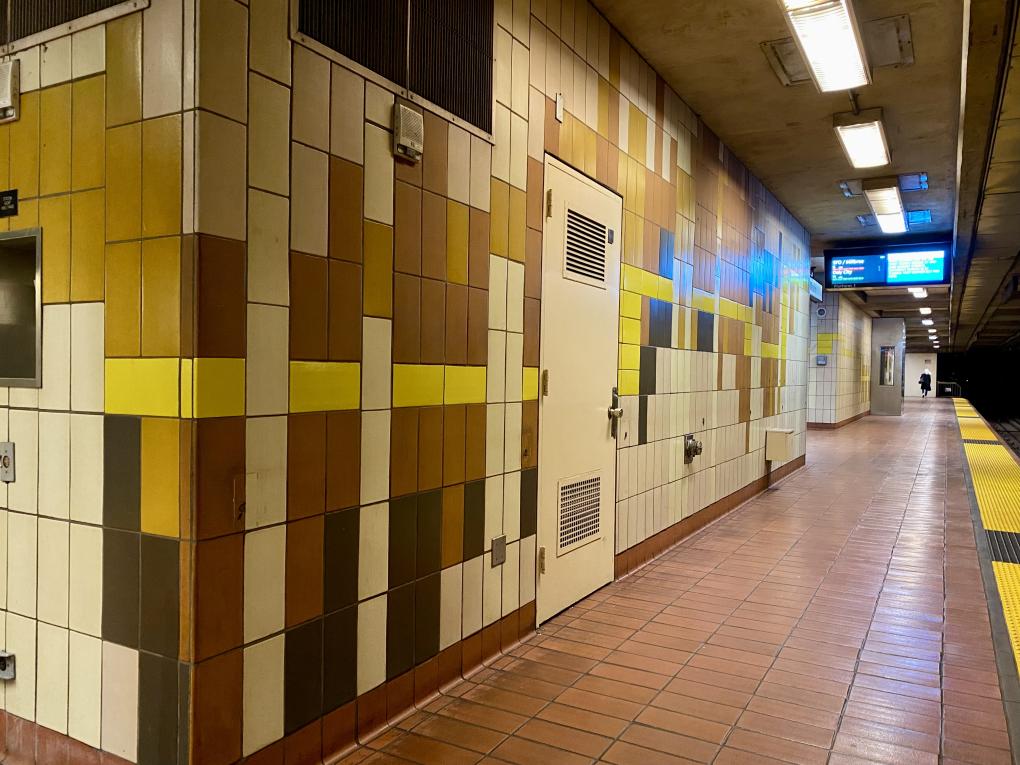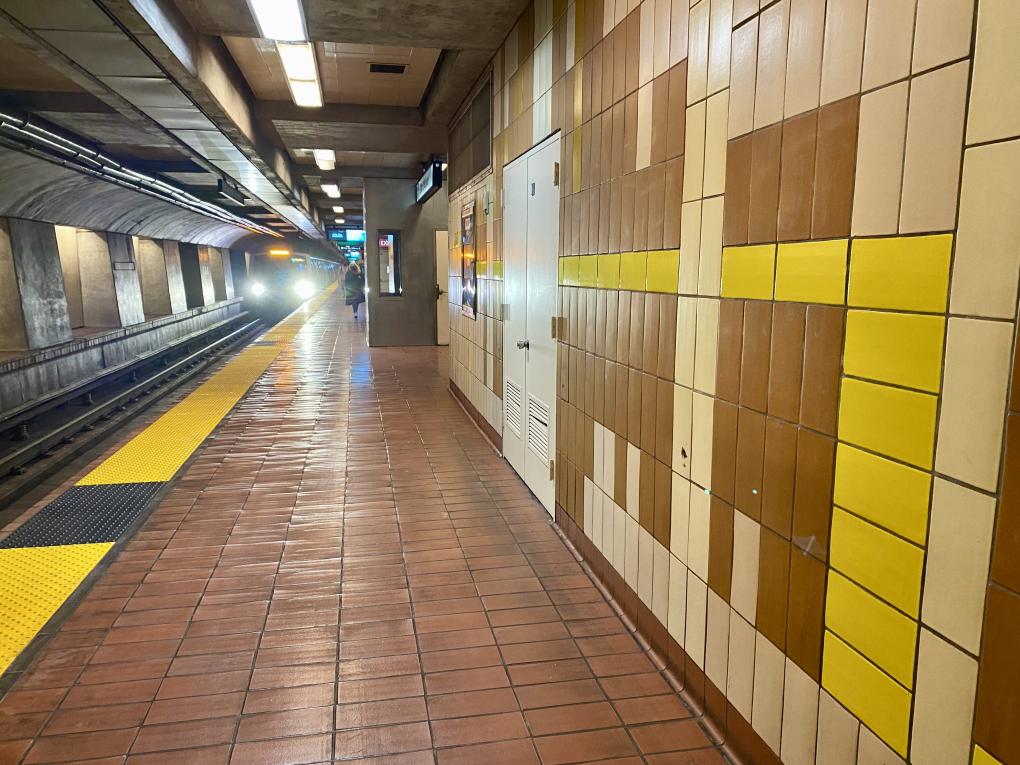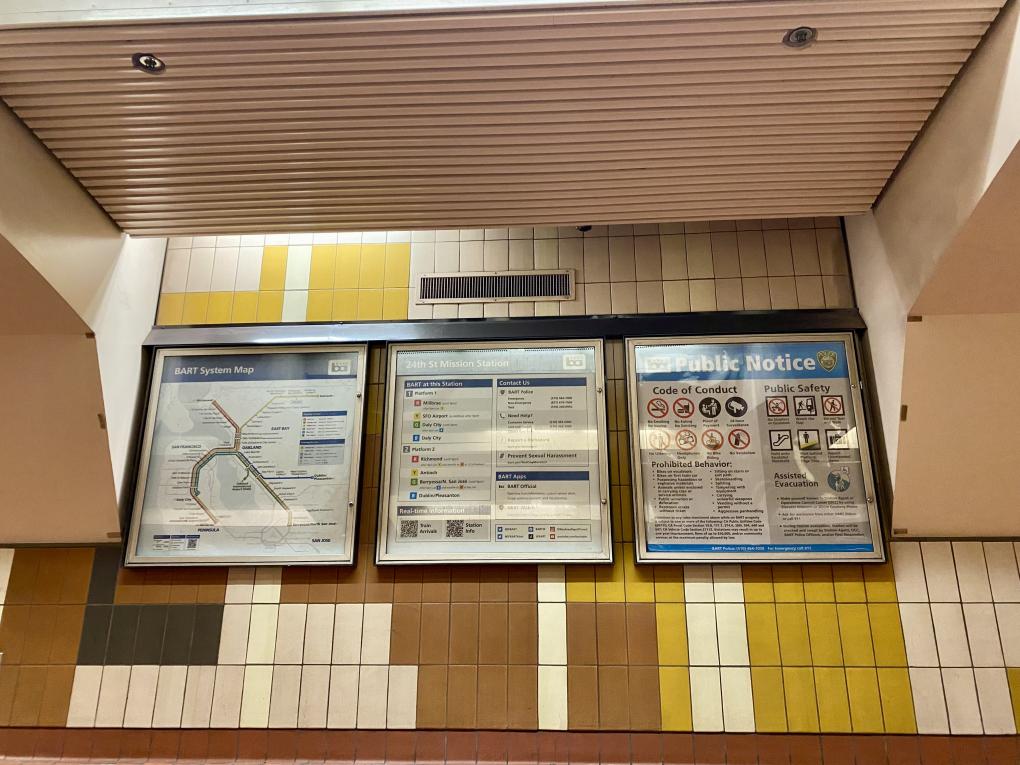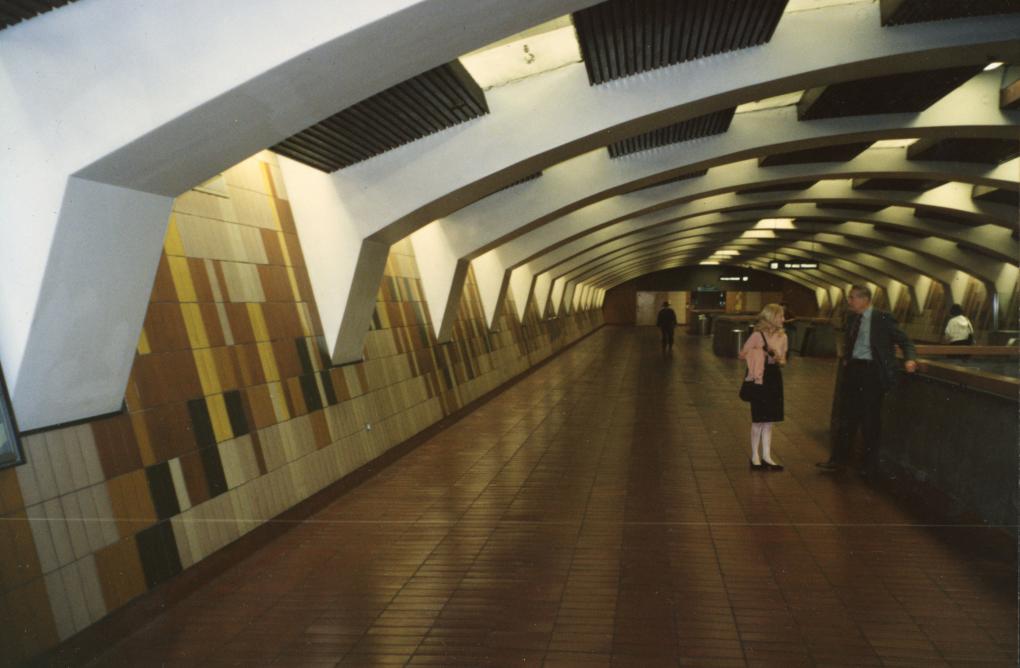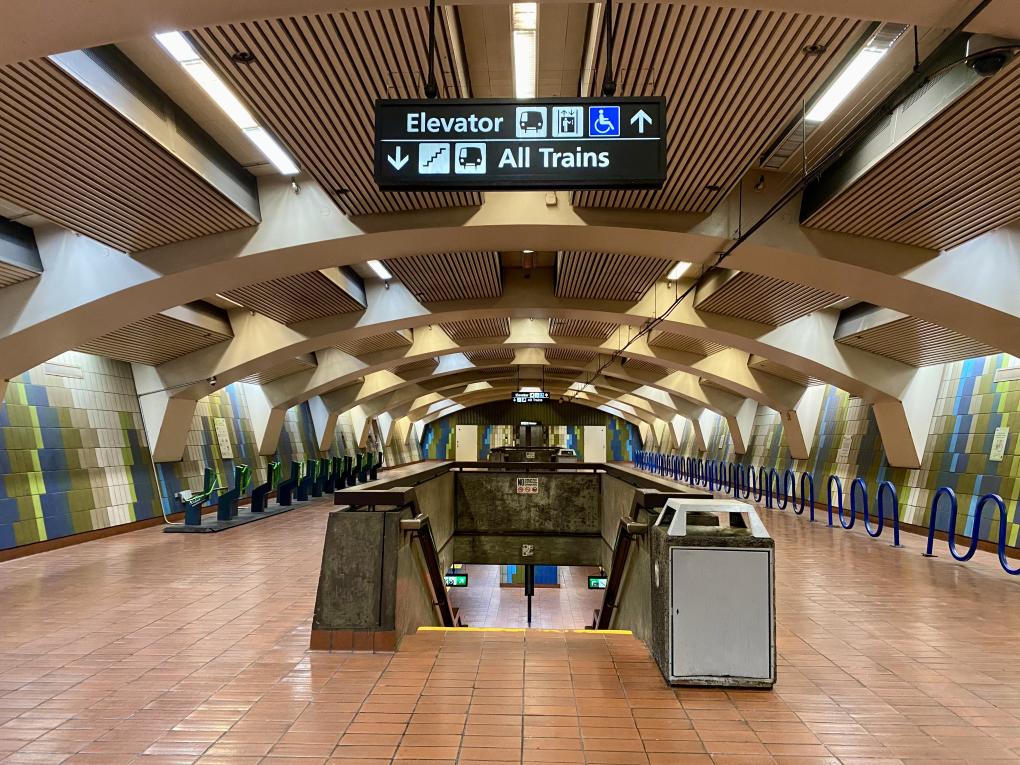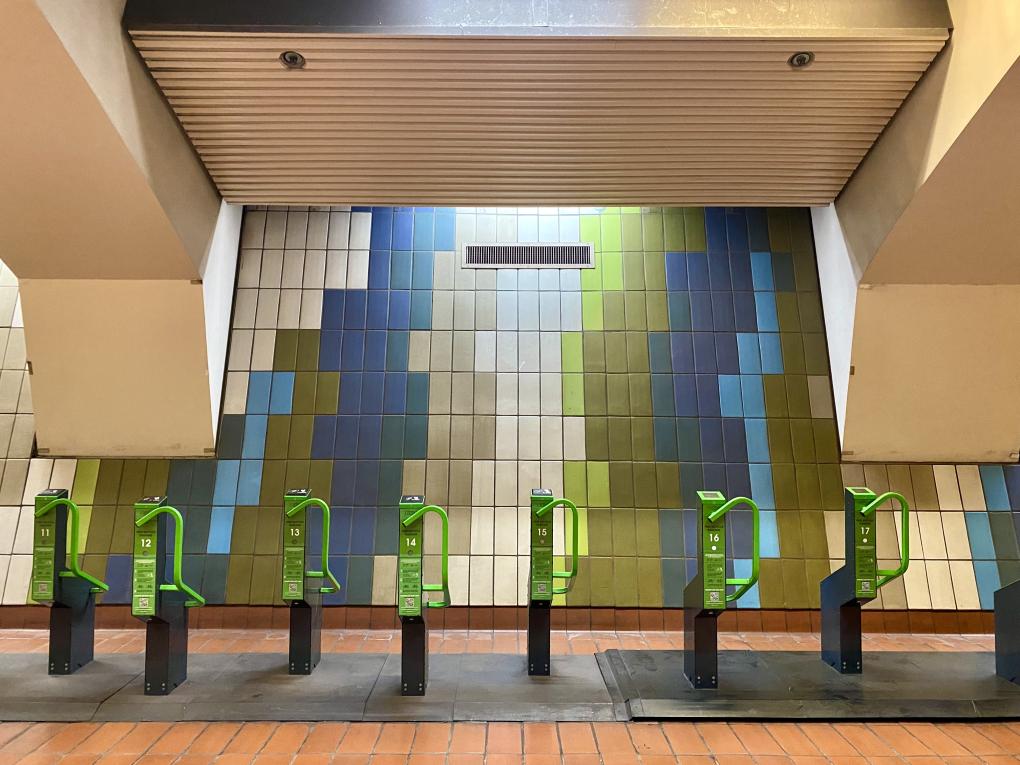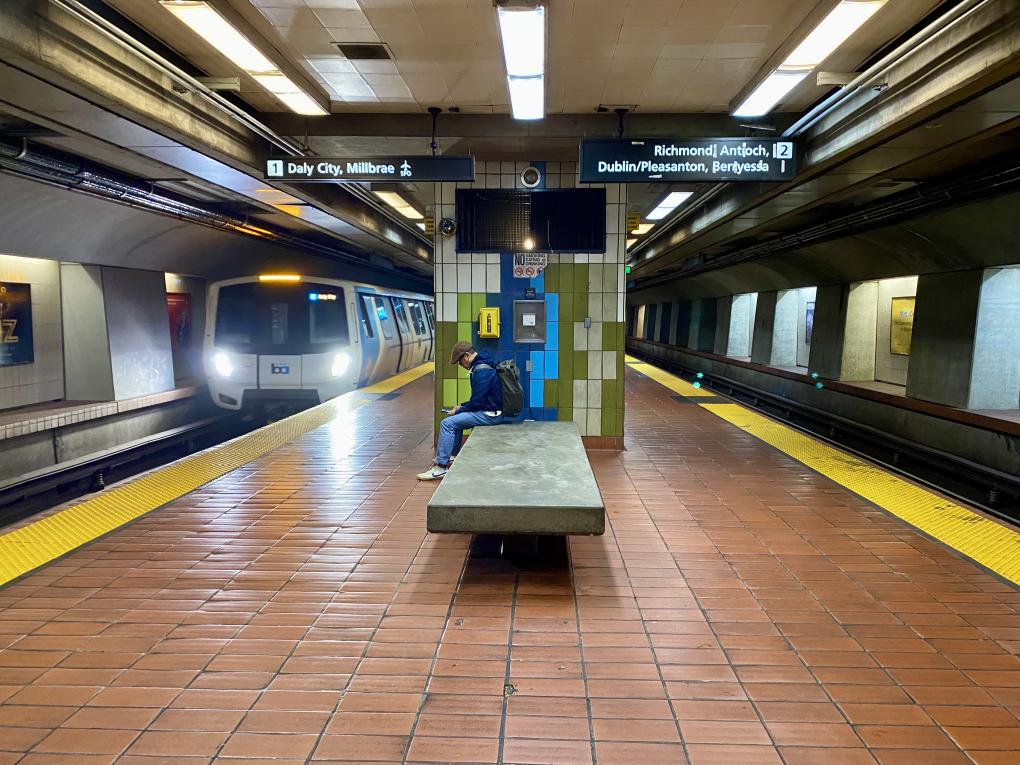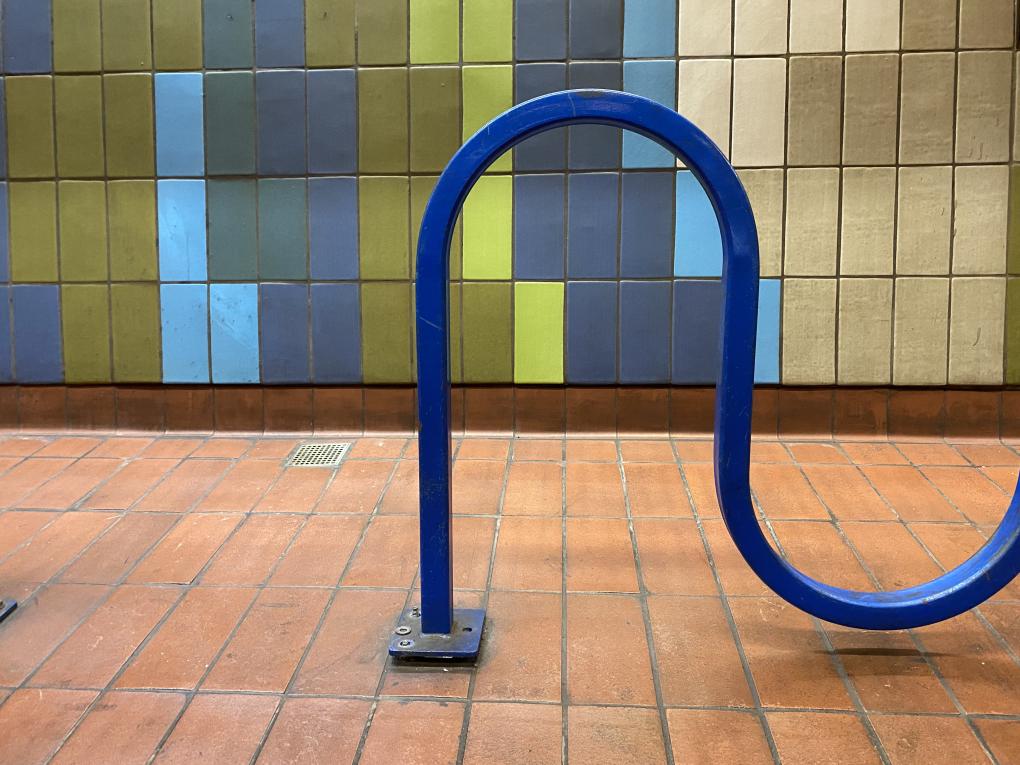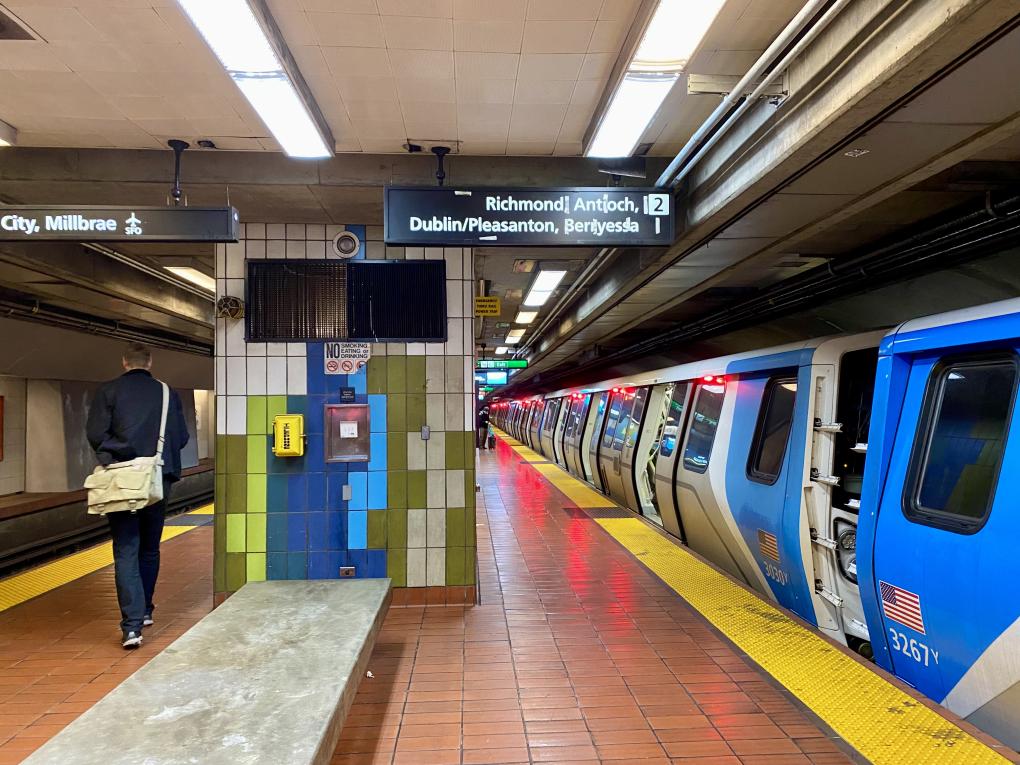Bay Area history reclaimed: The story of 95-year-old artist Janet Bennett and her longstanding tile artworks at 16th and 24th St. stations
Note: Janet Bennett’s tile murals have come to define the character of BART's Mission District stations, and yet, in the fifty-plus years since the tiles were placed, her contribution has gone unattributed...This Women’s History Month, BART is honored to bring forward the story of the artworks as well as that of the wonderful midcentury artist who made them.
BART will be installing plaques at 16th St. Mission and 24th St. Mission stations to recognize Bennett as the artist behind the character-defining murals.
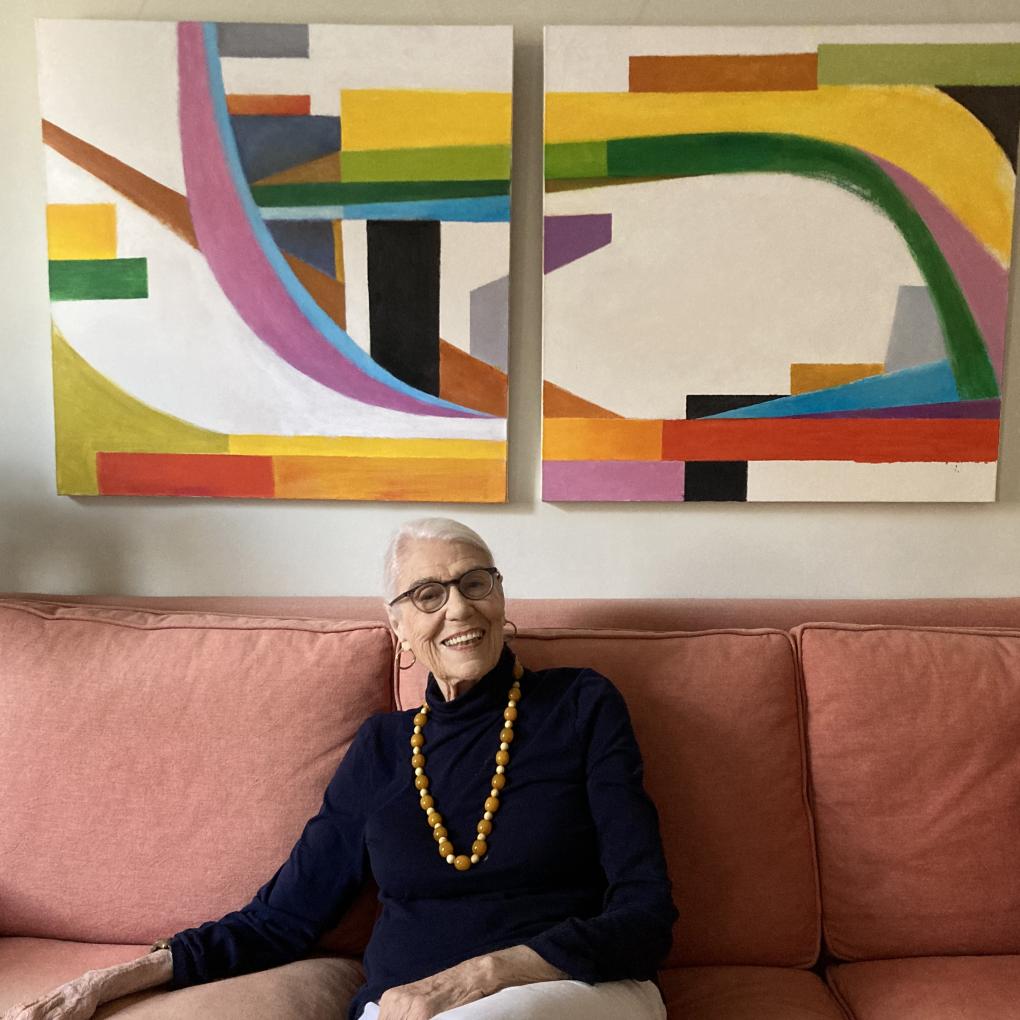
Janet Bennett, the artist behind the tile murals at 16th St. and 24th St. Mission stations, seated in front of one of her paintings in her New York City home.
Every day, thousands of people pass through BART’s Mission District stations in San Francisco. As they enter the fare gates, walk along the concourse toward the stairs, then onto the platform to await their trains, they are walking through history.
It’s a history wrought by many hands over more than five decades: the planners who mapped the system, the architects and engineers who drafted the plans, and the workers who sweated day by day to construct a transit space that would function not just during their lifetimes, but the lifetimes of their children, grandchildren, great-grandchildren, and so on.
BART stations serve a practical purpose, of course. But they are not solely utilitarian spaces. Stories are woven into their floors, their trackways, and their walls. These individual components speak together and alone, and if you take a moment to pause and investigate, they might reveal the stories they contain.
Artist Janet Bennett, now 95 years old and long retired, is a protagonist in the story of 16th St. and 24th St. stations. During the construction of these transit spaces, Bennett was hired by the station architect, Hertzka and Knowles, to design the striking tile murals on the stations' concourse and platform walls. Next time you’re passing through, look around and you’ll find you are surrounded by her tile artworks, from the snaking yellow formations on the platform at 24th St. to the tree-like waves of green and blue that dance on the concourse at 16th St.
“It’s gratifying that these works are still a part of people’s lives,” said Bennett, speaking from her New York City home. “They’ve gone through different lifespans so to speak. I’m happy that my tiles remain and that they’ll be there quite a while longer.”


Bennett's tile murals pictured on the concourses at 16th St. (top photo) and 24th St. (bottom photo).
Bennett’s tile murals have come to define the character of the Mission stations, and yet, in the fifty-plus years since the tiles were placed, her contribution has gone unattributed. Said Jennifer Easton, BART’s Art Program Manager: “As a woman and someone who works with artists all the time, it’s so common to see women artists obscured throughout history.” BART learned about Bennett and her connection to the Mission stations after her daughter, Maria McDonald, called BART Customer Services and told them that “my 95-year-old mother named Janet Bennett should be credited as the designer of the ceramic tile artworks at 16th and 24th St. stations.” She added: “It means a lot to her.” BART verified McDonald's claim via 1971 news clippings from local papers.
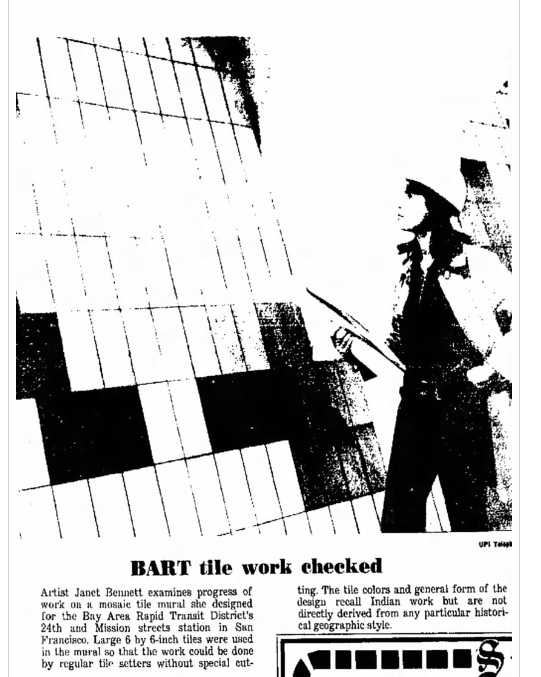
This Women’s History Month, BART is honored to bring forward the story of the artworks as well as that of the wonderful midcentury artist who made them.
“She really is a creative genius in my estimation,” said McDonald.
When Bennett was working as a staff and consultant for architectural firms and corporations in the 60s and 70s, she “was constantly breaking the glass ceiling and unconsciously taking on the lead in roles usually reserved for men,” her daughter said.
Bennett acknowledged that during that period, she was the only woman working for these major architecture firms outside of the secretarial staff. Even before then, when she was a student at Cranbrook, an art and design school in Michigan, Bennett said “no one expected that I would be anything but an architect’s wife.”
“It didn’t bother me at the time,” she said. “I was just doing my thing.”
(A relevant side note: Bennett also designed the famous mosaic passages at LAX, and her boss at the time, Charles Kratka, was long credited as the artist behind the works. Bennett set the record straight in 2007 after reading an obituary for Kratka that named him as the designer. She is now widely credited as the artist behind the mosaics. The artistic similarities between the LAX murals and the BART works certainly reinforce her claim.)
When the station architect contacted Bennett about designing the tile murals, she said she was “very, very excited.” Much anticipation and curiosity swirled around this new “Space Age” transit project, and Bennett was intrigued by the idea of leaving her mark on the system.
Upon accepting the assignment, Bennett got to work in her San Francisco studio outlining on paper the concepts for the murals. Once the initial designs were greenlit by the architect, Bennett executed the working drawings, which indicated the placement of every single tile. It was a lengthy and painstaking process.
Bennett said the designs at each station intentionally contrast with one another – there’s the dry, sunny feeling at 24th St. with its terra cottas and yellows and tans, and then the cooler tone of 16th St. with tiles of olive and gray and yellow green.
“One mural is more earthy, while the other is more sylvan,” she said. “Those concepts helped me create the overall program.”
Bennett’s artworks often reference “something from life,” and in many cases, she lets the colors and their relationships to one another inform her pieces. For 24th St., she referenced the vibrant hues of the Mission District and its close cultural ties to Latin America. The horizontal tiles that wrap around the core structures on the platform represent a yellow serpent, she said.
At 16th St., Bennett was influenced by visits to Marin County, its singular “forests, grasslands, and water.”
"Overall, the concern was that the colors worked well together,” Bennett said. “Part of it was motivated by a feeling that I wanted to express."
Bennett frequently traveled to Marin to meet with the tile maker for the project, the historic Heath Ceramics, which was and still is known for its unique glazes and handcrafted tiles. Heath Ceramics was founded by Edith Heath in 1948 in Sausalito, and its architectural tile line had gained acclaim with many architects throughout California by the time Bennett was working in the industry. Bennett said she collaborated closely with Heath to create the color palette for the BART station tile glazes, which she believes were custom made for the project.
Ceramic tiles are expensive, but you will notice that many BART stations incorporate them. That's because the material is durable, easy to clean, and conveys a sense of handcraftmanship, much like the use of wood, unique concretes, marble, and other unique architectural finishes used in the early BART stations. Bennett’s longstanding tile murals are a testament to the durability and timelessness of these materials.
The large ten-inch tiles Bennett used for her project added to its cost, she said. Because they were so large, the tiles sometimes warped during the firing process and had to be tossed out.
The architects of the stations also had something of a bone to pick with Bennett’s decision to use a horizontal tile layout on the core structures of the platform at 24th St.
“The architects said the horizontal tiles complicated the overall layout, and therefore were too time-consuming and costly to use. They said I should change my working drawings,” Bennett said. “I countered that it would cost more to redraw them."
“So,” she said triumphantly, “the horizontal tiles remain.”
After perfecting the drawings and selecting the last tiles, Bennett finally handed the project to the tile layers. The workers installed the tiles one at a time with special care and attention. Their skilled work in tandem with Bennett’s amaranthine designs has ensured that these murals will remain for many years to come.
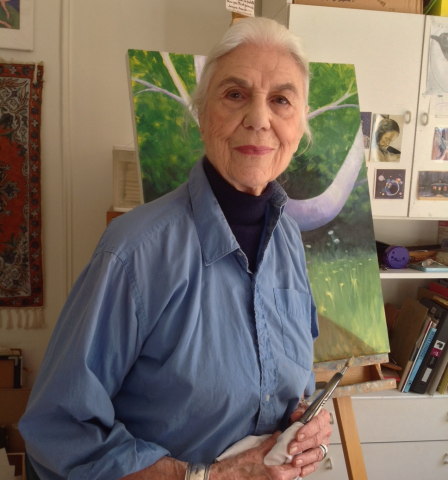
A portrait of the artist.
Bennett has left a mark on many public spaces, including those in the Bay Area where she lived for a time. She said she created works for a variety of local institutions: metal mobiles for the Ice House, a longstanding set of buildings in San Francisco’s Waterfront District; an illuminated acrylic and steel sculpture for Memorex, considered to be one of Silicon Valley’s first tech startups; and even a stage set for a San Francisco Opera gala.
Back in the 60s and 70s, Bennett said her artworks were mostly considered “decorative” because of their functional usage in architectural settings. She thinks the term demeans her work and its artistic value.
“I didn’t think of my work as merely decorative,” she said. “Heck, [by that definition] Michelangelo ‘decorated’ the Sistine Chapel. It’s applied art made to enhance a space and give dignity to it."
Many of Bennett’s artworks have disappeared in time, just like the buildings and businesses that housed them. But she recognizes that "often art is here one day and gone the next.”
“Artwork has its moment,” she said, “and sometimes that’s it. But artwork as part of architecture can exist for centuries.”
Though Bennett’s art practice mostly consists of painting these days, she says she’d consider taking on another mural commission if the right project came along.
“If somebody contacts me because of this article, I could certainly do this type of work again,” she said. “I don’t have the strength to set the tiles, but I certainly have the strength to design some murals.”
